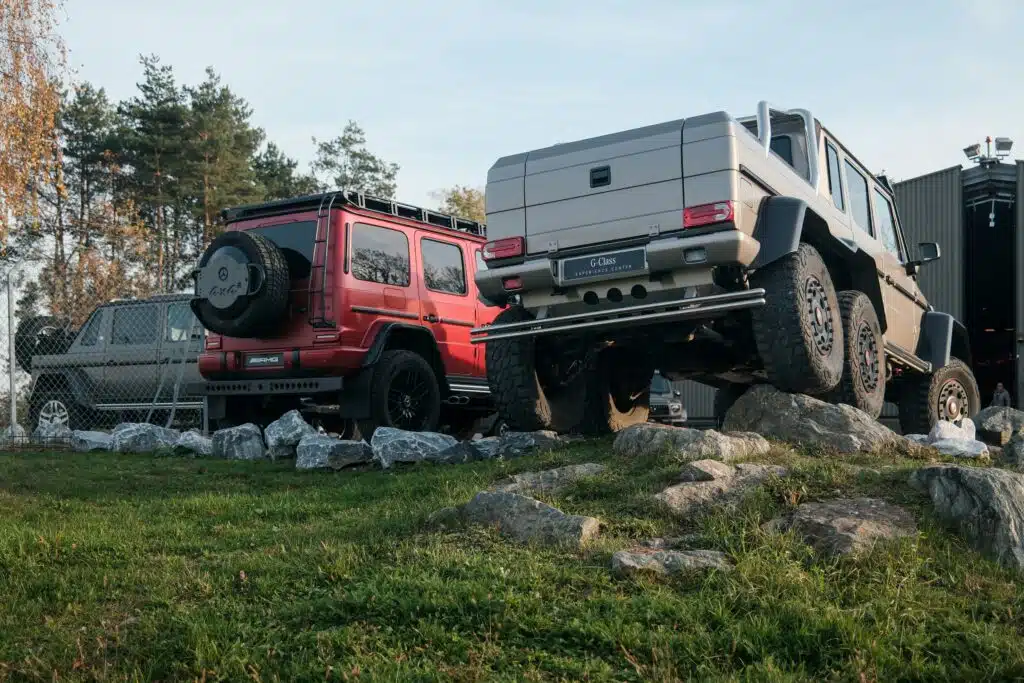There’s nothing quite like the stomach-drop feeling of hearing something snap under your rig in the middle of nowhere. No cell service. No help nearby. Just you, your gear, and a problem that could’ve been avoided.
That’s where absolute preparation counts. Building a reliable adventure rig isn’t about loading it up with the most expensive gear on the market. It’s about knowing what you need, what your terrain demands, and how to make your setup work without falling apart halfway up a mountain pass.
There’s a whole community doing just that—figuring out how to stay safe, comfortable, and mobile wherever the trail leads. Whether you’re just getting into off-road travel or dialing in your third rig, the foundation is always the same: build smart, build reliable.
The Right Mods Can Save Your Trip
You don’t need every shiny part you see on Instagram. But certain upgrades? They’re not optional when your destination doesn’t have a tow truck.
Branches, rocks, and other trail impediments cause the most damage there, and lighting is essential. Many experienced overlanders purchase aftermarket parts and accessories specifically designed for off-road performance, as upgrading the front end of their car with sturdy grilles and lighting can significantly enhance visibility and protection on rough trails.
Nobody is advocating for you to dress like you’re going to battle. But if you’ve ever had to drive at night through a canyon filled with bouncing shadows, you know the value of solid headlights and protection up front. These mods don’t just protect your investment—they help you avoid trail-ending mistakes.
Suspension That Matches Your Terrain
Think of your suspension as your rig’s attitude. It determines how it handles stress, bumps, and surprise dips that come out of nowhere.
What works for the red rocks of Utah probably won’t hold up in the wet, root-tangled backroads of the Pacific Northwest. Your terrain should guide your setup. Soft, slow trails might only need a mild lift and upgraded shocks. But if you’re hitting rock gardens or steep, uneven climbs, you’ll want more aggressive travel and damping control.
One too-common mistake? Trusting factory suspension to do all the heavy lifting. Stock systems are designed for pavement and mild gravel, not deep ruts or fully loaded trips across mountain passes. You don’t want to be the one limping back to camp with a blown shock and a tilted rear axle.
Build with your intended terrain in mind, not just for how it looks parked at the trailhead.
Tires and Traction: The Ground Game
You’re risking every mile if your tires aren’t made for the terrain, regardless of how well-tuned your setup is. When you’re back on pavement, mud terrain tires might feel like riding on bricks, even though they’re fantastic in deep, sloppy conditions. All-terrain vehicles are more balanced but may struggle in deep snow or extremely muddy conditions. Then there’s rock-crawling rubber with reinforced sidewalls. It’s great for climbing, terrible for fuel economy.
What’s essential? Know your environment and choose a tire that can handle its most challenging conditions. Consider load capacity, sidewall strength, and puncture resistance when evaluating these factors. Always keep a tire repair kit on hand for better traction.
Also, don’t underestimate the value of a sound air system. Being able to air down for improved grip and then back up to highway pressure can save you time, money, and traction. It’s a small tool with a significant impact.
Armor and Recovery: When (Not If) You Get Stuck
Suppose you wheel long enough, getting stuck stops being a possibility and becomes a certainty. That’s not pessimism, but it’s just off-roading reality.
A well-armored rig helps you avoid damage when crawling over rocks or sliding through hidden roots. Skid plates, sliders, and bumpers aren’t just for show. They’re your defense line when clearance gets tight and nature fights back.
But armor only gets you so far. Recovery gear is what gets you out when things go sideways. A winch with a solid anchor point, a few recovery boards, shackles, a tow strap, and gloves. That’s your basic toolkit. Don’t overcomplicate it, but don’t skip it either.
Every minute spent preparing recovery gear is a minute you won’t spend sitting in the mud thinking, “Why didn’t I pack that?”
Power and Payload: What You Carry Matters
It’s easy to keep loading your rig until it turns into a rolling storage shed. But every pound matters when it comes to control, suspension wear, and fuel economy. Dual battery setups, solar panels, and efficient power stations can enable you to run lights, refrigerators, and tools off-grid for days, without draining your starter battery. Just keep track of your energy consumption and pack with intention.
Weight distribution is critical. Too much gear in one corner, and you’ll feel it in every turn. Think through what you use, and don’t let “just in case” items dominate your setup. If it hasn’t been touched in three trips, it probably doesn’t need to come.
Simplifying isn’t just about space—it’s about making your rig more agile and your trips more enjoyable.
Living Comfortably on the Road
You can’t tackle terrain confidently if you’re miserable after sunset. Comfort is necessary—practical comfort that maintains your good mood and your restful sleep, not extravagance.
A decent sleeping setup can be the difference between a great mood and a terrible one, be it a rooftop tent, a sleeping platform, or a cozy bed within the van. Utilize clever storage solutions, such as drawer systems, crates, or MOLLE panels, to house items within easy access.
Don’t neglect to cook meals. With a basic camp stove, basic utensils, and a sturdy table, mealtime becomes more than merely refueling.
Although of gigantic significance, water systems and sanitation are often overlooked. A clean water source, soap, and a basic gray water setup will keep you comfortable, clean, and healthy. When nature is your bathroom, you’ll be glad you figured this part out ahead of time.
Test It Before You Trust It
Nothing works flawlessly the first time. That’s why shake-down trips exist. Take your rig out for a weekend close to home and try to live exactly how you plan to on more extended expeditions. Cook meals, sleep in your setup, drive over rugged terrain, and log what’s working—and what’s not.
It’s better to discover a leaky tent zipper or a rattling drawer system an hour from your house than three states deep in the backcountry. These test runs expose blind spots. Maybe your fridge drains too fast, your tie-downs shift, or your tires rub at full flex. This is where your rig earns trust, not in your garage, but out in the real world.
Conclusion
Building a reliable adventure rig doesn’t mean going broke. It means being thoughtful. Every piece you add should solve a problem, not create one. The goal isn’t to chase perfection or approval. It’s to stay safe, move freely, and enjoy the wild places without worrying your rig will fall apart when things get bumpy.
Dial it in. Test it often. Keep what works. And remember: the best adventure rig is the one that gets you home, every time.


0 Comments